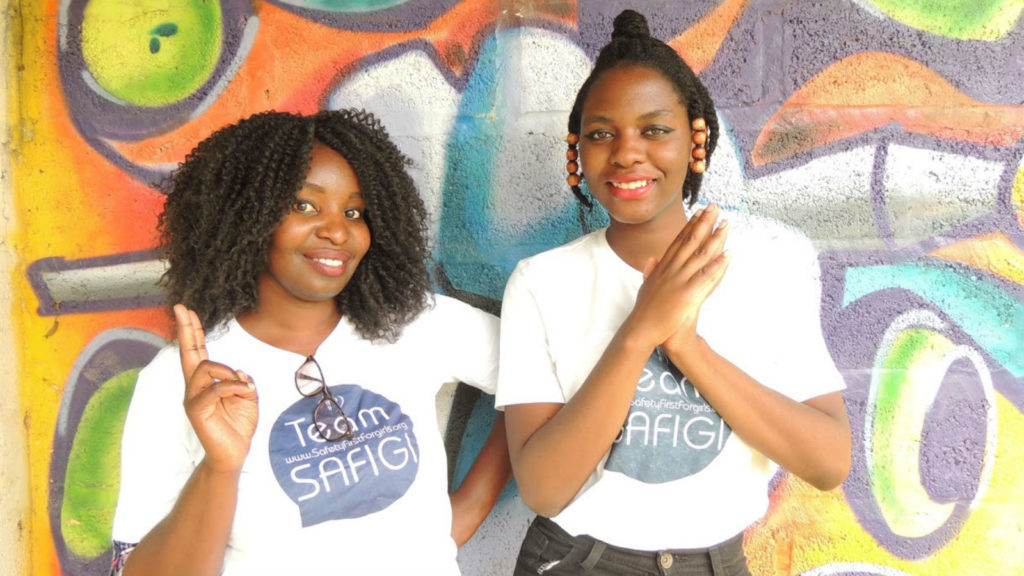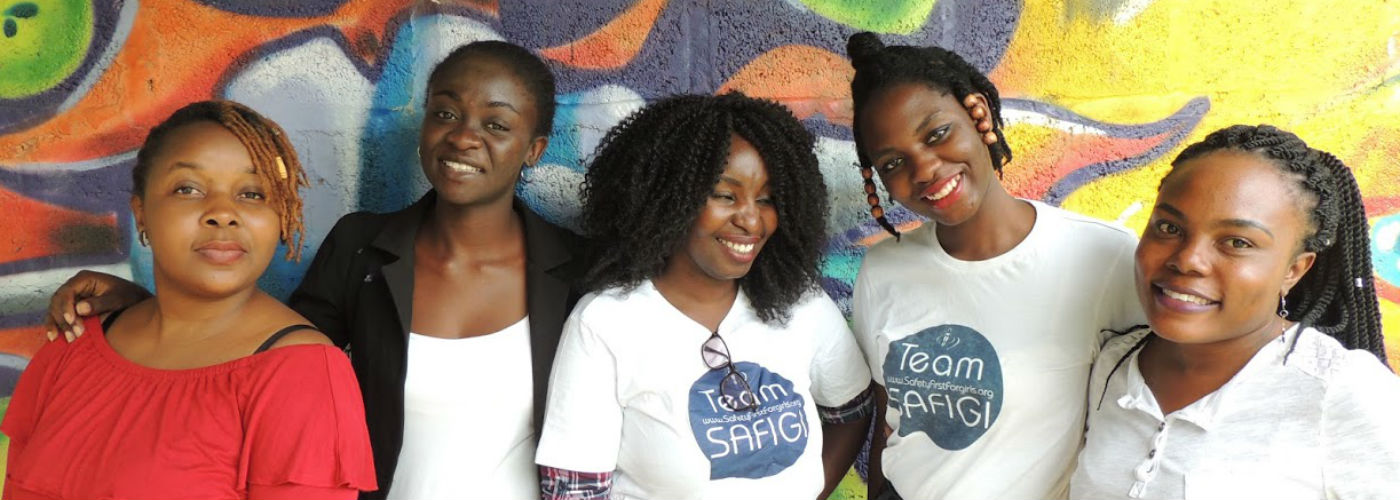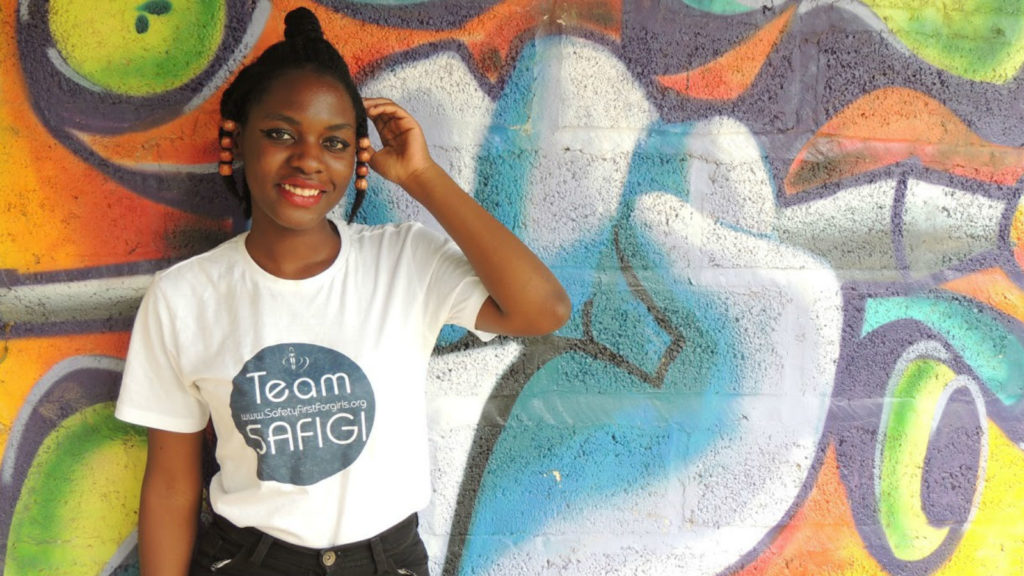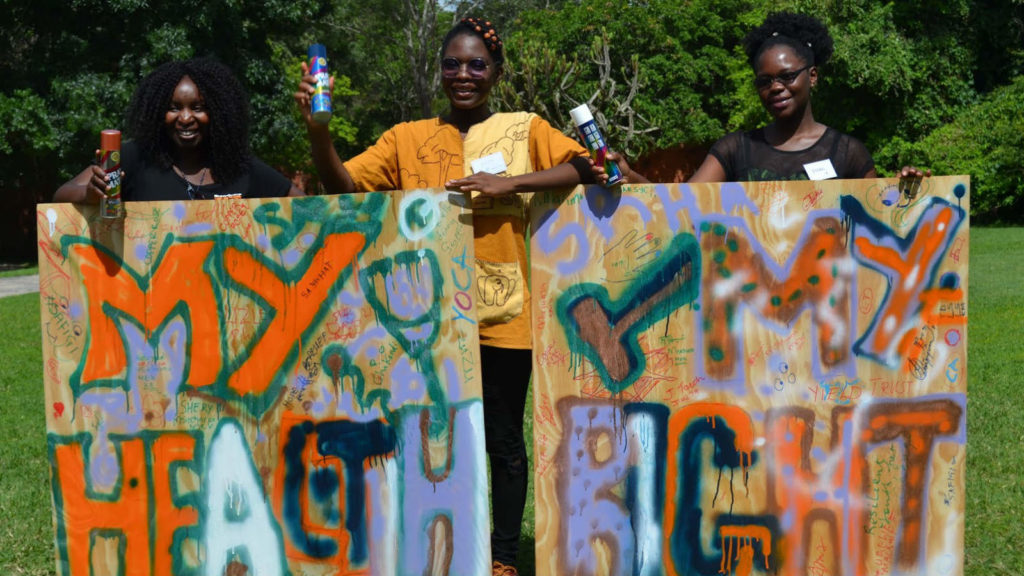When a 17-year-old girl in Zambia started a blog to discuss girls’ safety, she never imagined it would be read nearly 200,000 times in a few years. Esther Mwema started her blog to address the safety crisis she saw affecting girls. She soon found out she wasn’t alone. A global community grew rapidly around her blog, and in 2014 she registered Safety First for Girls (SAFIGI) as an official organization in Zambia.
Today, SAFIGI is a community run by more than 250 volunteers in some 50 countries. It is a partner of Hivos’ SRHR Fund in Southern Africa, which supports youth-led organizations in the region. Together we build the capacity of young people to champion adolescent sexual and health rights.
Let youth lead
Hivos works with organizations like SAFIGI to improve sexual and reproductive health rights (SRHR) and services in East and Southern Africa, without stigma or discrimination. The SRHR Fund supports access to contraceptives, safe abortion, and sexual education, and helps youth and female-led organizations become established organizations in the SRHR space. The Fund also aims to fill the gap in young female voices when it comes to policy and decision making about their sexual and health rights.
Youth should be in the room when decisions are being made about their bodies.
So we asked Esther to explain why this is important. “There are so many things we girls didn’t learn at school about ourselves and our own bodies”, she says. “Growing up, there were lots of situations that made me feel very unsafe as a female. But I was never asked what I would like to do about them, or what I could do to protect myself. All policies related to sexual education and rights are made by adults. That’s not right. I think youth should be in the room when decisions are being made about their bodies.”
Activism needs data
Esther soon realized that her activism needed hard facts. So she decided to tackle core issues affecting girls in the developing world with data. To do this, Esther created an open research and data analysis facility called the Safety Report. In collaboration with UN Online Volunteers service, the Safety Report combined seven papers written by eight female researchers on topics such as sexual harassment, LGBTI, and machismo. By working with young data collectors primarily from Zambia, the Safety Report also gives youth an opportunity to kick start their careers in research, gender, and the social sciences.
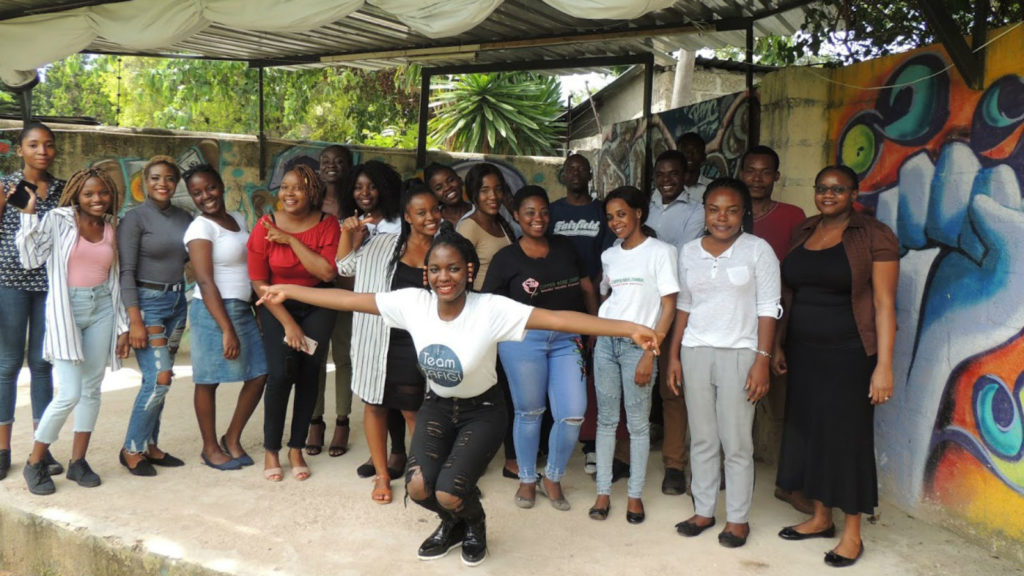
Staggering results
In Zambia, SAFIGI’s Safety Report data analysis found that 87 percent of women learned about personal hygiene during their school years. This means the focus in education is on external safety, while only a sobering 11 percent of women are knowledgeable about mental health, 16 percent about emotional safety and 24 percent about self-defense.
On top of that, the Safety Report showed that 90 percent of girls did not report domestic abuse, and that more than 65 percent of them had faced emotional abuse.
Not being aware of internal safety (peace of mind, heart and emotions) or external safety (protection of the body, other persons, and their environment), not having an understanding of either mental wellbeing or self-defense, “means a girl is being deprived of her human rights,” says Esther. “This affects a girl’s sexual and health rights intrinsically, because it affects her self-esteem, courage, and understanding necessary to defend her sexual and health rights, or report abuse she has faced.”
Breaking the culture of inequality
Backed up by this data, SAFIGI started raising awareness of sexual and health rights more comprehensively. Threats to the internal or external safety of girls are often not isolated issues, according to Esther: “We’re dealing with human beings, and human beings are complex. The solution to, for example, reducing teenage pregnancies, is not just about increasing contraceptives. We need to address issues at the root level to make sure we are not putting band-aid solutions on a much deeper problem.”
Esther finds addressing cultural norms and traditions is also very important in understanding the complexities around sexual and health rights. Social media has allowed positive social movements to arise and change existing narratives around these norms and traditions. Since 2014, Esther has led annual online campaigns that give women in communities from countries as diverse as Zambia, India and the United States a platform to change their own narratives. This includes the Sharing Not Shaming campaign, If a Girl video series, and the Everyday a Girl photo stories project, which made her a Girl Rising Creative Challenge by HP Finalist in 2018.
This year, Esther is also leading a podcast campaign, Equality Culture, giving voice to forty women from fifteen countries including Zambia. The podcasts discuss the difficult balance between traditions and culture on the one hand, and promoting gender equality on the other.
“Gender equality can be seen by many people in Zambia as a foreign concept that doesn’t fit in our traditional culture, she tells us. “For example, at one of the workshops we held at the University of Zambia, a participant said that gender equality was causing the high divorce rate and spousal murders plaguing Zambia at the time. Instead of going into this discussion too much, we want to draw attention to the underlying themes in our culture, rooted in patriarchy, machismo, and repressive gender norms.”
Safety Education: a way to improve girls’ safety
SAFIGI’s activities and data collected over the past years are slowly showing Esther that change is beginning. Safety Education has played a very important role in this by teaching young women about their internal and external safety. Now it turns out that nine in ten persons believe Safety Education can lead to safer societies (SAFIGI 2017). And the government of Zambia has recently collaborated with the United Nations to roll out Comprehensive Sexuality Education to all teachers in public schools – a positive step toward improved awareness of sexual, reproductive and health rights.
Esther concludes, “We found that lots of girls experience divergent threats to their safety, and a one-size-fits-all response is grossly inadequate, especially when it comes to sexual, reproductive and health rights. This is why we started focusing on safety education. Here, girls can learn about their inherent human dignity through understanding themselves internally and gaining critical knowledge of how their environment affects them.”
All this shows why Hivos uses mechanisms like the SRHR Fund to work with resolute young leaders, such as Esther, to increase the capacity, involvement and knowledge of young people – and especially girls – regarding their sexual and health rights.
